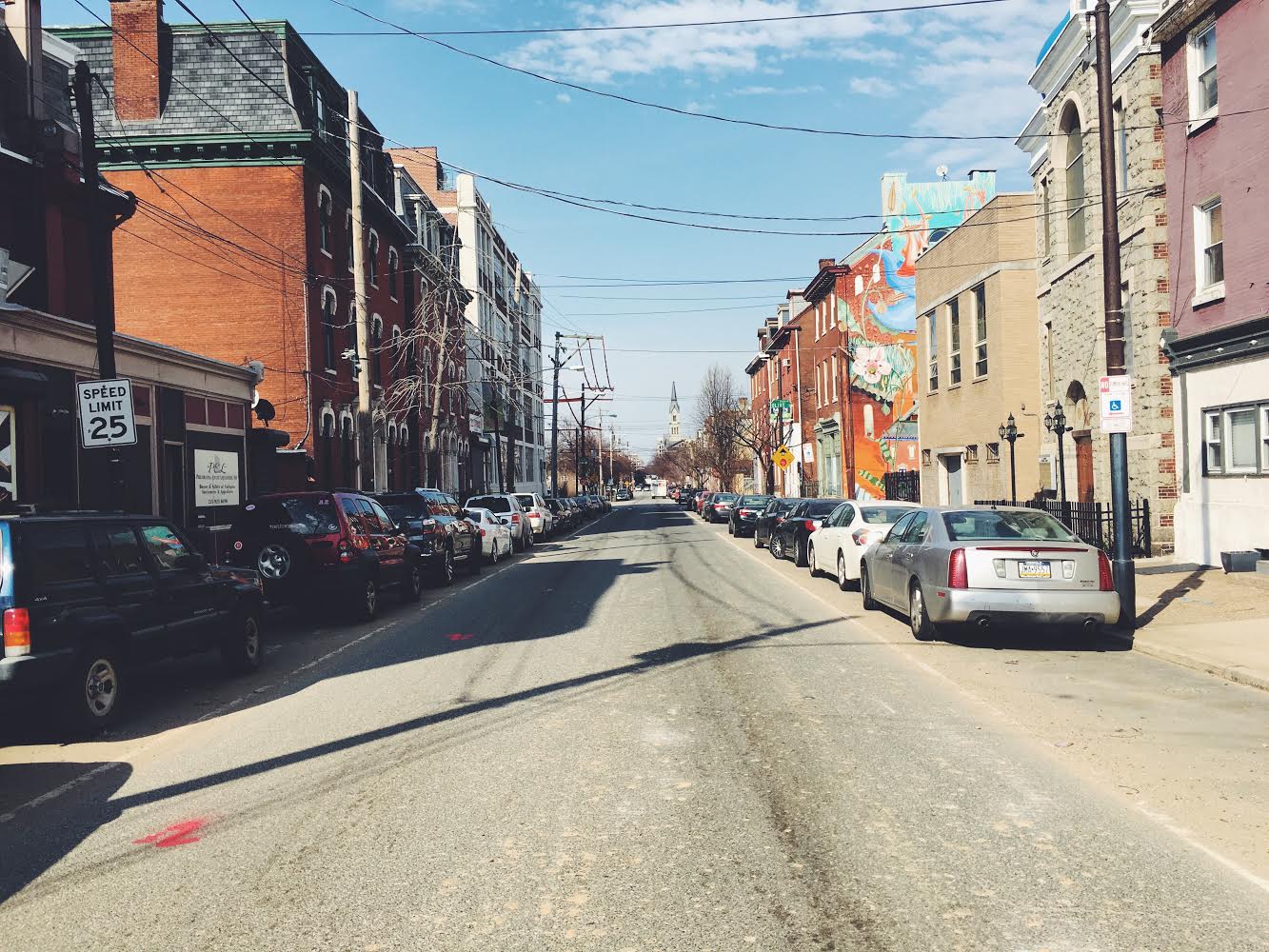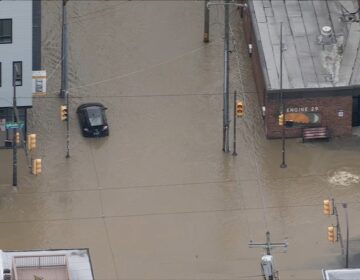Northern Liberties neighbors talk traffic calming for 5th Street

Neighbors have long complained about reckless driving on N. 5th between Girard and Fairmount to no avail. But in 2016, seemingly broad agreement between new and long-time residents may finally have given the issue some political juice.
Last Wednesday Northern Liberties neighbors discussed traffic calming options for N. 5th Street with representatives from Council President Darrell Clarke’s office and Streets Department Commissioner Mike Carroll in a packed meeting at the Northern Liberties Community Center.
“For 38 years, I have tried to get something done about 5th and Brown,” said one resident, “Once I talked with a police officer and asked what it would take, because I’d been trying to get a signal there. And what he said was there had not been enough deaths.”
It is true that N. 5th hasn’t had any fatalities in recent years. Between 2008 and 2013 no one was killed on this stretch, but seven pedestrians were hit during that time, according to PennDOT data, five of which were near the intersection of 5th and Girard. It’s actually the third most crash-prone location in the neighborhood, after Front and Girard, which alone saw 10 pedestrian crashes and two fatalities over the same period, and 2nd and Girard, which had 8.
The audience, a mix of younger, mostly white newcomers and long term, mostly African-American residents, all sang from the same hymnbook in describing the problem: Motorists speed, run stop signs, and block lines of sight by parking too close to the corners.
In theory, N. 5th is a two-lane street with two lanes that are about 10.5-11 feet wide, with parking on both sides. But the centerline separating the two lanes has faded, creating the impression of a very wide single lane during off-peak hours. Neighbors say the street is congested at rush hour, but not most of the time, making the operating speed effectively much higher than the posted limit of 25 MPH. There are stop signs at the end of each block, and crosswalks at the major intersections, but according to neighbors many drivers traveling at 35 or 40 MPH barely slow down for them.
“It is a regular, daily occurrence where people do a very brief rolling stop, and come within inches of your children or your dog, and then get very rude and vulgar with you because you are in their way,” said one George Street resident.
Mike Carroll from the Streets Department admitted that the city has the capacity to solve these problems, but design changes like mid-block crosswalks and curb bumpouts would involve trade-offs with parking and levels of service for vehicles.
“Some of the problems could probably be fixed pretty easily if no one cared about parking,” he said, “but people do care about parking. And so you’ve got to think about how much parking are you willing to give up to solve a problem, and who gets affected by that.”
There appeared to be a general consensus that the Streets Department should pilot speed cushions, repaint the medians, and consider other design changes that would “give the impression psychologically that you can’t go that fast,” as one attendee put it.
Carroll said the city does have a process for neighborhoods to request speed cushions and other traffic calming measures, though he noted that these wouldn’t necessarily address the stop sign issue, and Streets probably wouldn’t install both a speed cushion and a traffic signal.
Technically, the Streets Department’s policy is that speed cushions have to be spaced 1,000 feet from another traffic control device like a stop sign or signalized intersection. This segment wouldn’t ordinarily qualify by that standard, but Carroll said Streets has two exceptions: if the Commissioner makes a discretionary judgment that the location is appropriate, or if the project is a pilot. He believes N. 5th Street could qualify for both, and said Streets would be exploring a pilot.
Some residents suggested automatic camera enforcement should be used to catch speeders, since the Police Department doesn’t consider moving violations a high enforcement priority, but Carroll explained that speed cameras are currently illegal in Pennsylvania.
Other residents suggested flashing red lights, better street lighting, curb bump-outs, raised crosswalks ala the Comcast crosswalk to Wawa, and asking the Parking Authority to daylight the corners at intersections.
“This is something that the neighborhood really needs to come to a consensus around, because if we put crossings in, we need to clear lines of sight around the crossings, which means you’re going to lose 4 to 5 parking spaces for every crosswalk,” Carroll said.
After an attendee suggested narrowing the road with a buffered bike lane (the big applause line of the meeting), Carroll warned that traffic would be diverted onto other streets if 5th became a one-lane street. He wasn’t buying one attendee’s suggestion that less roadway for cars would reduce overall vehicle traffic.
The significance of Carroll’s comments about the trade-offs between pedestrian safety and convenience for vehicles get to the heart of what Vision Zero is all about. At the most basic level, a Vision Zero approach to street safety is a commitment to choose the safety side of the trade-off more often.
Here though, Carroll’s cautious comments before an audience unusually receptive to traffic calming may suggest the Kenney administration doesn’t intend to press the issue if neighbors can’t reach consensus. The approach recalls Kenney’s earlier idea to make street sweeping services voluntary to accommodate those who don’t want to move their cars.
In New York City, local opposition has bedeviled the De Blasio administration’s push to implement Vision Zero traffic calming changes to the point that, in December, De Blasio gave NYC DOT more power to override Community Board opposition to street changes. Former MOTU chief of staff Andrew Stober also flagged overcoming local opposition as one of the key challenges awaiting Kenney’s yet-to-be-named Complete Streets Commissioner.
The Streets Department is planning to conduct a site study and issue recommendations for specific interventions in the next few months.
WHYY is your source for fact-based, in-depth journalism and information. As a nonprofit organization, we rely on financial support from readers like you. Please give today.




